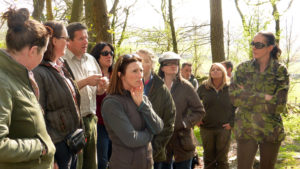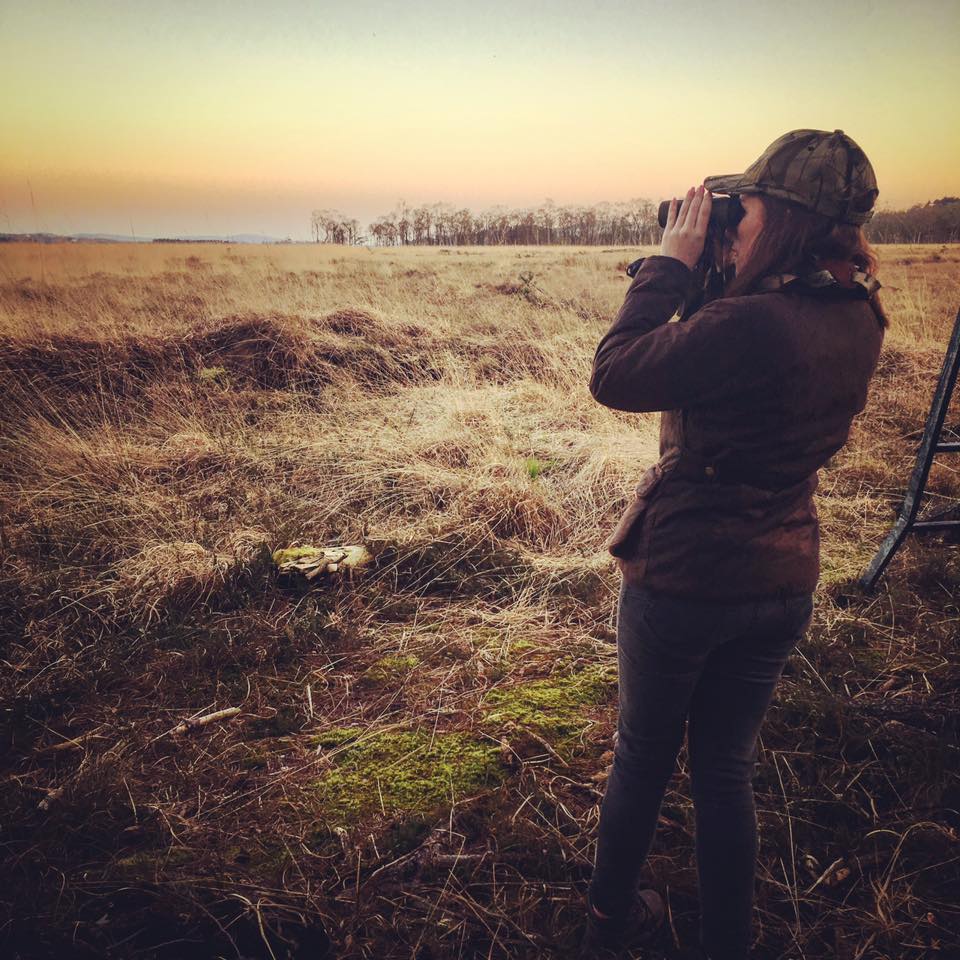A few years back I would of chuckled at the thought of describing myself as “outdoorsy”, but (dare I say it) within my almost two years at BASC this is what I’ve become. Whether it be shooting, beating or attempting to train a gundog I am eager to get involved, so when the opportunity to turn my hand to stalking came up I was super keen to give it a go.
The event took place in the stunning surroundings of Burton in Kendal, Cumbria and was very much a preDSC1 course event, although the first of its kind to be aimed specifically at just ladies. It was great to be joined by a few familiar faces and ladies, who like me, were very much in the beginner’s boat. As well as host, BASC North regional officer and experienced stalker Mike Thornley we were joined by a number of specialists in this field including pro stalker Jonathan Standing, part-time keeper and stalker Carl Jackson and senior lecturer at Newton Rigg College Curtis Mossop. With very little knowledge on Deer Stalking it was great to have the chaps on hand to answer my burning questions, mainly being why?
It was clear to me from the get go that the number of wild Deer within the UK is continuing to increase with six species in the UK alone, these being; Red, Roe, Fallow, Sika, Muntjac and Chinese water Deer. There are a number of issues associated with wild Deer including effects on biodiversity, rural economy, animal welfare and, surprisingly to me, human health and safety. Mike explained the number of Deer-vehicle collisions has grown rapidly from the 00’s with 30,000 alone with this expected to increase in the future, particularly in urban areas.
Unlike others, this was a very hands on event, with the morning, after a brief introduction, and the sun on our side starting off with a freshly cooled deer, we gralloched and dressed the Deer carcass. This made me immensely aware of how and why it is necessary to carry out thorough inspections of culled animals. Food safety is the up most priority and a full carcass inspection minimises the risks of both diseased meat entering the food chain. If a notifiable disease is found it is a legal requirement to inform your local APHA (animal & plant health association), these include foot and mouth, TB and many more.
Next up, the kit. I’ve been around shooting and shotguns for a good portion of my life but rifles and rifle ammunition were completely new to me. There is also a great deal more to think about when dispatching deer as Curtis explained, “Nothing raises heated debate in the stalking world quite like calibre choice and it is a question I get asked all the time by my students. Forgive the pun, but there is no silver bullet in this subject. Providing your calibre selection is lawful and complies with all UK deer legislation, it is really a matter of personal choice gained through experience. For complete beginners, calibres such as .308, 6.5×55 and .243, have good ammunition availability and will humanely kill any of our six Deer species”.
Just like with shooting, clothing is also extremely important, especially to us women, when out stalking. “Layering up” is essential and will allow you to add or remove lightweight garments easily depending on weather. Clothing should also be waterproof and breathable as you can be required to be out for hours at a time or to walk long distances (suitable/comfortable footwear is a must). Silent, that’s what a stalkers clothing must be. So often stalks can be ruined by noisy rain coats or squeaky boots, luckily we had BASC trade member Phillip Wright, CEO of Nomad UK clothing on hand to tell us all the do’s and don’ts.
An ingenious idea on the day was to give us ladies the chance to go on a simulated Deer Stalk. What’s one of those? I hear you cry. The simulated stalk gave us the opportunity to be in a real stalking situation and make decisions on whether or not the Deer should be culled. There are a number of things to consider when weighing up these elements, the main being the backdrop and Deer standing position. Skyline shots should never be used as there is no safe background, and the same applies when using trees as backdrops. There were a number of signs/markings from Deer that we were able to spot including trails (pathways), droppings, scrapes and the most obvious, hoof prints.
After a morning jam packed with information I was feeling quietly confident, and when paired with a fellow newbie and pro Jonathon Standing I was even more hopeful I would witness a deer harvested (if I could stay quiet enough). After a scrumptious venison stew we set off on what would turn into a thrilling few hours. Binoculars in hand and stalking head on it wasn’t long before we spotted a set of Red Deer slots and even greater a herd sneaking past. Eager to get to the highseat (to my surprise fitting three of us), the herd reappeared in the far distance and it was an absolute joy to see. Although no deer were culled that night it gave me a great understanding of the extreme dedication and hard work that is put into a stalk. From the pre planning to the dispatch to the carcass preparation… It looks like I’ve found my new hobby.
If, like me, you have had a taster of Deer Stalking and are looking to progress a great place to start would be to look into gaining your DSC1 certificate (Deer Stalking Certificate). Designed for the sportsman or woman who has recently taken up stalking and is seeking further advice and guidance. To find out more information about the DSC1 course visit https://0ld.basc.org.uk/sporting-services/basc-training-courses/deer-stalking-certificate-dsc1/

